S'sonic
Stealth
Menu
A free template by Lucknowwebs.com for WYSIWYG WebBuilder 8
Powered by Sispro1-S
Nigel G Wilcox
Paragon Of Space Publication
© Copyright Reserved - United Kingdom
Ideal Screen Composition 1024 x 768
SITEMAP
PSEUDO SCIENCE
SCIENCE RESEARCH
ABOUT
Desk
Supersonic
Stealth
Study
Menu
MAIN INDEX
Fastest Air Planes
Space
Transport
Menu
Hawker Hunter
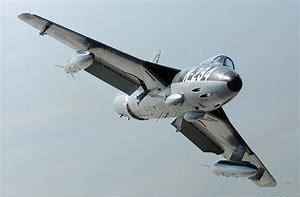
The Hawker Hunter is a transonic British jet-powered fighter aircraft that was developed by Hawker Aircraft for the Royal Air Force during the late 1940s and early 1950s. It was designed to take advantage of the newly developed Rolls-Royce Avon turbojet engine and the swept wing, and was the first jet-powered aircraft produced by Hawker to be procured by the RAF. On 7 September 1953, the modified first prototype broke the world air speed record for aircraft, achieving a speed of 727.63 mph.
On 22 August 2015, an ex-military jet aircraft being operated as a warbird crashed during a display at the Shoreham Airshow at Shoreham Airport, England, killing 11 people and injuring 16 others. It was the deadliest air show accident in the United Kingdom since the 1952 Farnborough Airshow crash, which killed 31 people.
The aircraft, a Hawker Hunter T7, failed to complete a loop manoeuvre and crashed onto vehicles on the A27 road. The pilot, Andy Hill, survived the crash, and was placed in a medically-induced coma. As a result of the accident, all civilian-registered Hawker Hunter aircraft in the United Kingdom were grounded, and restrictions were put in place on civilian vintage jet aircraft displays over land, limiting them to flypasts and banning high-energy aerobatic manoeuvres.
The official investigation by the Air Accidents Investigation Branch concluded that the crash resulted from pilot error.
The single-seat Hunter was introduced to service in 1954 as a manoeuvrable day interceptor aircraft, quickly succeeding first-generation jet fighters in RAF service such as the Gloster Meteor and the de Havilland Venom. The all-weather/night fighter role was filled by the Gloster Javelin. Successively improved variants of the type were produced, adopting increasingly more capable engine models and expanding its fuel capacity amongst other modifications being implemented. Hunters were also used by two RAF display teams: the "Black Arrows", who on one occasion looped a record-breaking 22 Hunters in formation, and later the "Blue Diamonds", who flew 16 aircraft. The Hunter was also widely exported, serving with a total of 21 overseas air forces.
During the 1960s, following the introduction of the supersonic English Electric Lightning in the interceptor role, the Hunter transitioned to being operated as a fighter-bomber and for aerial reconnaissance missions, using dedicated variants for these purposes. Two-seat variants remained in use for training and secondary roles with the RAF and the Royal Navy until the early 1990s. Sixty years after its original introduction it was still in active service, being operated by the Lebanese Air Force until 2014.
The Hunter saw combat service in a range of conflicts with several operators, including the Suez Crisis, the Aden Emergency, the Sino-Indian War, the Indo-Pakistani War of 1965, the Indo-Pakistani War of 1971, the Rhodesian Bush War, the Second Congo War, the Six-Day War, the War of Attrition, the Yom Kippur War, and the 2007 Lebanon conflict. Overall, 1,972 Hunters were manufactured by Hawker Aircraft and its successor, Hawker Siddeley, as well as being produced under licence overseas. In British service, the Hunter was replaced in its principal roles by the Lightning, the Hawker Siddeley Harrier and the McDonnell Douglas F-4 Phantom II.
Maximum speed: 1,150 km/h (714.58 mph), Range: 1,901 mi, Maiden flight: 20 Jul 1951, Length: 45.93 ft, Wingspan: 33.66 ft
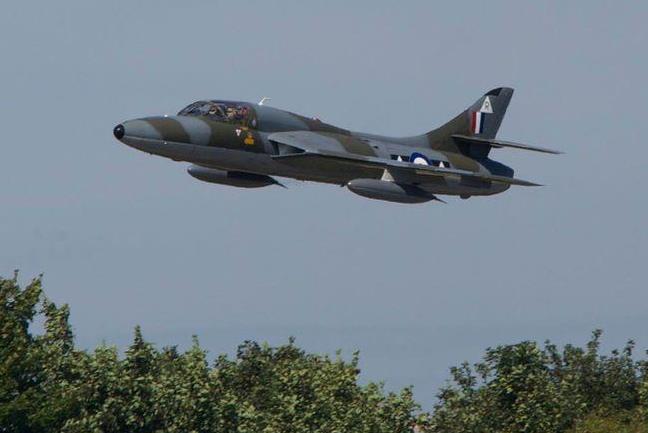
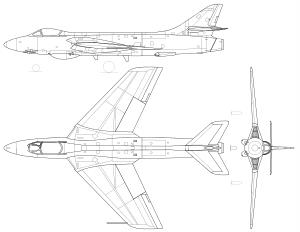
General characteristics
Crew: One
Length: 45 ft 11 in (14.00 m)
Wingspan: 33 ft 8 in (10.26 m)
Height: 13 ft 2 in (4.01 m)
Wing area: 349 ft² (32.42 m²)
Empty weight: 14,122 lb (6,405 kg)
Loaded weight: 17,750 lb (8,050 kg)
Max. takeoff weight: 24,600 lb (11,158 kg)
Powerplant: 1 × Rolls-Royce Avon 207 turbojet, 10,145 lbf (45.13 kN)
Performance
Maximum speed: Mach 0.94, 620 kn (715 mph, 1,150 km/h) at sea level
Combat range: 385 nmi (445 mi, 715 km)
Ferry range: 1,650 nmi (1,900 mi, 3,060 km) with external fuel
Service ceiling: 50,000 ft (15,240 m)
Rate of climb: 17,200 ft/min (87.4 m/s)
Wing loading: 51.6 lb/ft² (251.9 kg/m²)
Thrust/weight: 0.56
Armament
Guns: 4× 30 mm (1.18 in) ADEN revolver cannon in a removable gun pack with 150 rpg
Hardpoints: 4 underwing (7 hardpoints on Singaporean FGA/FR.74S, essentially refurbished FGA.9 derived from F.6) with a capacity of 7,400 lb (3,400 kg) and provisions to carry combinations of:
Rockets:
4× Matra rocket pods (each with 18 × SNEB 68 mm (2.68 in) rockets) or
32× Hispano SURA R80 80 mm (3.15 in) rockets
Missiles:
4× AIM-9 Sidewinder Air-to-air missiles, mounted on Singaporean FGA/FR.74S (two on Swiss Mk.58 Dutch F6's and Swedish Mk.50)
4× AGM-65 Maverick Air-to-surface missiles, mounted on Singaporean FGA/FR.74S (two on Swiss Mk.58)
Bombs: a variety of unguided iron bombs
Other: 2× 230 US gallons (870 l; 190 imp gal) drop tanks for extended range/loitering time
Avionics
Ekco ARI 5820 ranging radar
Role: Fighter
Fighter-bomber/Ground attack
Reconnaissance aircraft
National origin: United Kingdom
Manufacturer: Hawker Siddeley
First flight: 20 July 1951
Introduction: 1954
Retired: Retired from military service 2014
Status: Active as a warbird
Primary users: Royal Air Force (historical)
Indian Air Force (historical)
Swedish Air Force (historical)
Swiss Air Force (historical)
Number built: 1,972
Unit cost: £100,000 in 1956
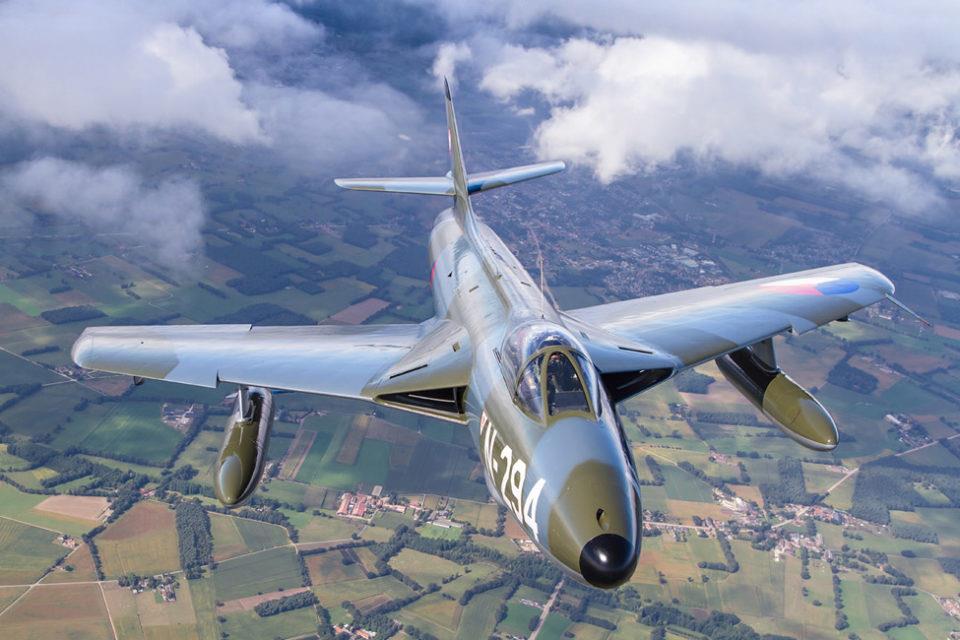
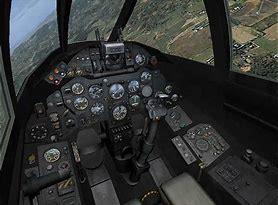
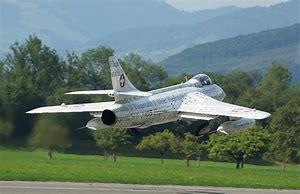

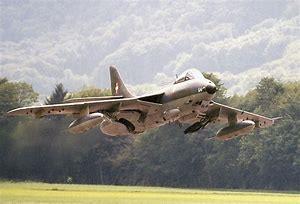

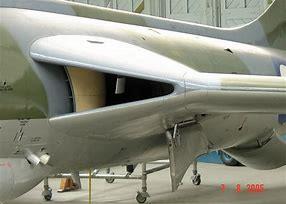

The Hunter entered service with the Royal Air Force as an interceptor aircraft. It was the first jet aircraft produced by Hawker for the RAF. From the outset it was clear that the type had exceptional performance, being the first RAF aircraft capable of effectively matching the English Electric Canberra bomber. The Hunter also set numerous aviation records, including absolute speed records. The type was also lauded for its quick turnaround time, enabled by features such as its removable gun pack, pressurised fuelling system, and easy handling in flight.
The definitive version of the Hunter was the FGA.9, on which the majority of export versions were based. Although the Supermarine Swift had initially been politically favoured by the British Government, the Hunter proved far more successful, and had a lengthy service life with various operators, in part due to its low maintenance requirements and operating costs.
As the RAF received newer aircraft capable of supersonic speeds to perform the air interceptor role, many Hunters were modified and re-equipped for undertaking ground-attack and reconnaissance missions instead. Hunters deemed surplus to the RAF's requirements were also quickly refurbished for continued service abroad. The Hunter would be procured by a considerable number of foreign nations. In addition to former RAF aircraft, roughly half of the nearly 2,000 Hunters produced had been manufactured specifically for overseas customers. The Hunter would be in operational service with the RAF for over 30 years. As late as 1996, hundreds were still in active service with various operators across the world.
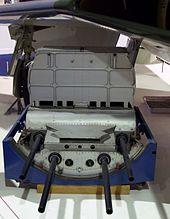
A Hunter's removable weapons pack. In the foreground are the four 30 mm ADEN cannons















